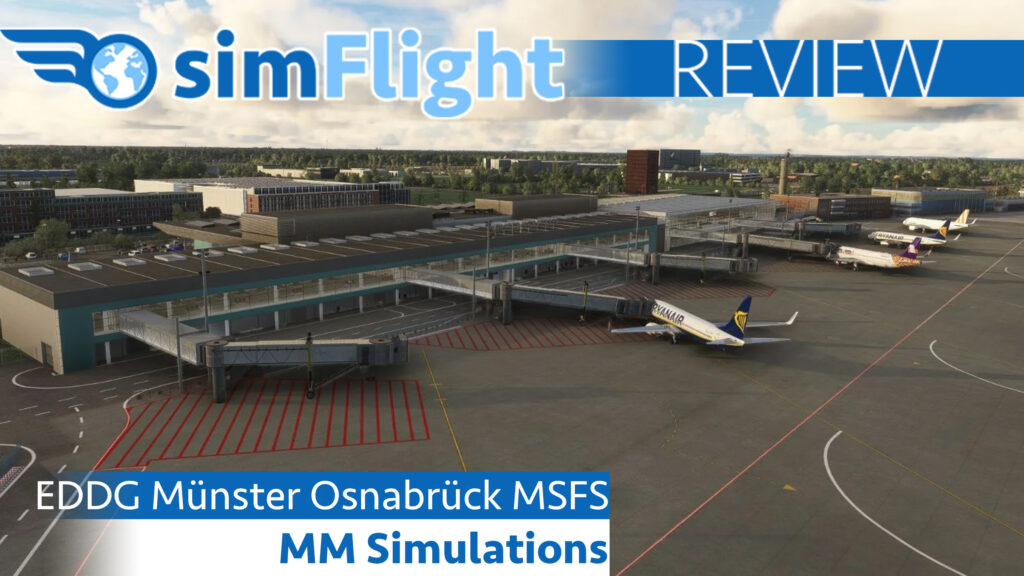
Review by: Rick Desjardins
Münster Osnabrück Airport, ICAO: EDDG is a small international airport located near Greven 25 km north of Münster and 35 km south of Osnabrück in the northern German state of North Rhine-Westphalia. Unlike many airports that have a long history this one is relatively new having only been proposed in 1966. The German government then approached the British Army to clear the area of any unexploded ordnance from the Second World War and also to prepare the land base for the airport to be built. Construction of the apron and runway began in 1968 and was completed in 1969 with the remainder of the airport being completed on 1972 and the first charter flight in 1973. Enhancements followed throughout the 80s and 90s with a new terminal 1 to accommodate larger numbers of passengers being completed in 1995 and terminal 2 in 2002. Currently terminal 1 is used for arrivals and terminal 2 for departures. The airport serves routes to European destinations only with the top three destinations being; 1. Palma de Mallorca, Spain, 2. Antalya, Turkey and 3. Munich, Germany. In 2023 just under 1 million passengers passed through its facilities.
The airport has a single runway 07/25 @7,119ft.
Installation
After purchasing the product it is accessed via the Simmarket app and is installed in the MSFS community folder. For anyone using the MSFS addon linker program the scenery can then easily be moved after the installation has been completed to a new folder of your choice. Just remember should you wish to uninstall or update the scenery you will need to move it back to the original installation folder.
Visuals
Ground Textures
Quality of all the ground textures regardless of whether they were the hard surfaces of the aprons/taxiways/runways or the areas covered by ground vegetation I found all to be very good and realistic. Comparing what is in the scenery to what I found on aerial photographs they did an excellent job of recreating the airport area that is covered by the product.
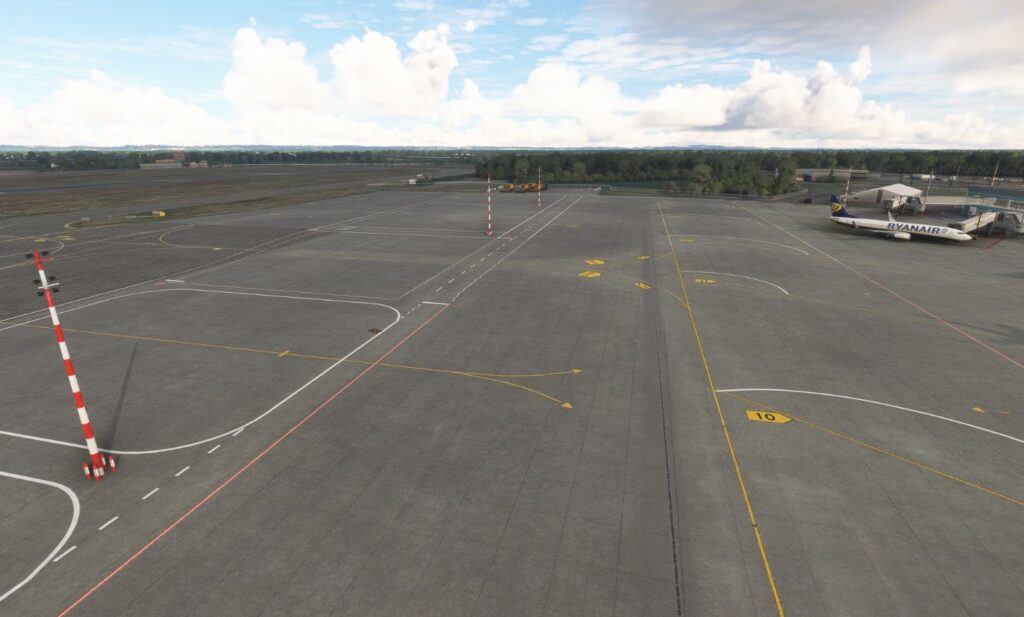
Structures
The layout of the airport is a very simple one with the airport’s structures located along the south side of the interconnecting east, central and west aprons. Starting from the east and going west, the first is a building that looks like it is used for freight and cargo then the main passenger terminal, hangars four thru one, hangar five, the control tower/AIS facilities, hangar six and finally hangar seven.
Each building had its own unique features and these were recreated using high resolution detailed textures augmented by additional 3 dimensional details. There quality was such that differences in building materials and the effects of weathering and aging were discernible; this was especially evident on rooftops.
Passenger terminals 1 and 2 are the largest and most prominent structures at the airport and they made good use of all of the various graphic and visual techniques to make them an interesting and realistic looking representation of the actual buildings. This holds true for both the apron side as well as the street side. The apron side is dominated by large floor to ceiling transparent glass walls. From the outside we have a clear view into the modelled interior and from the inside we get a view of the apron and runways. The terminals also have five jet bridges which were detailed and functional.
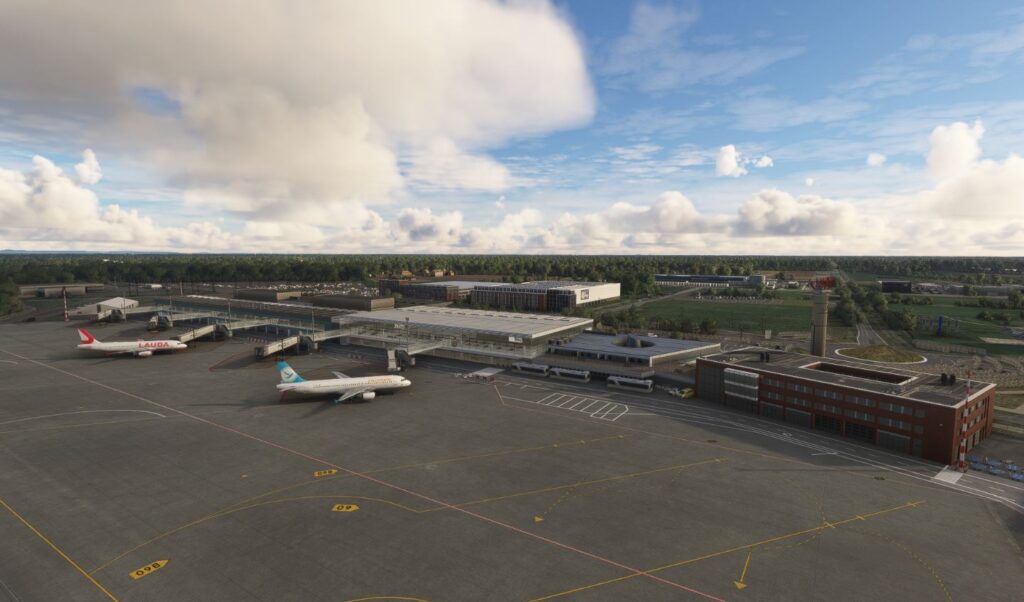
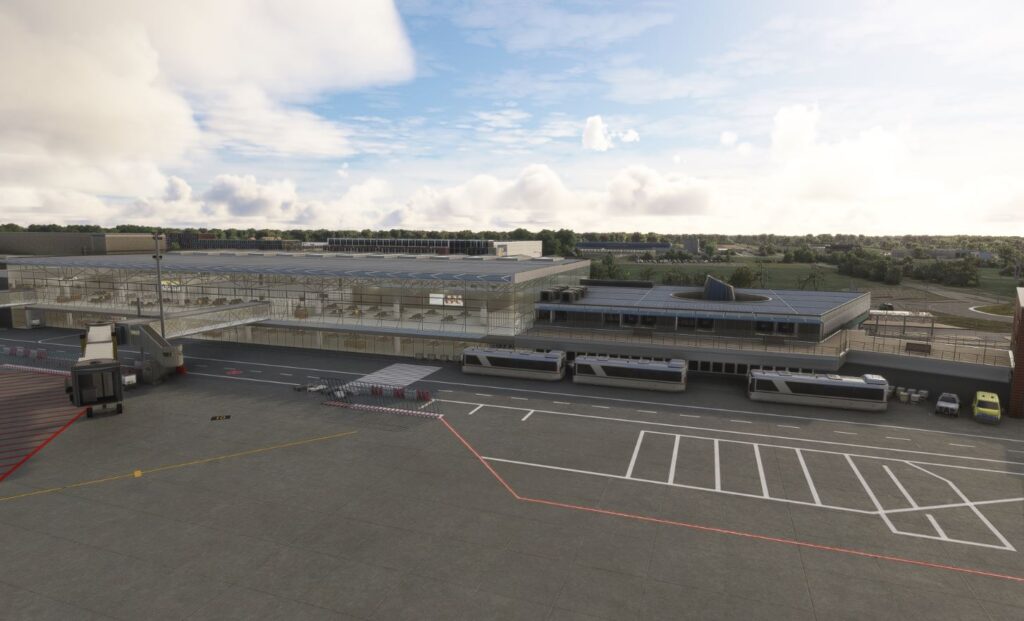
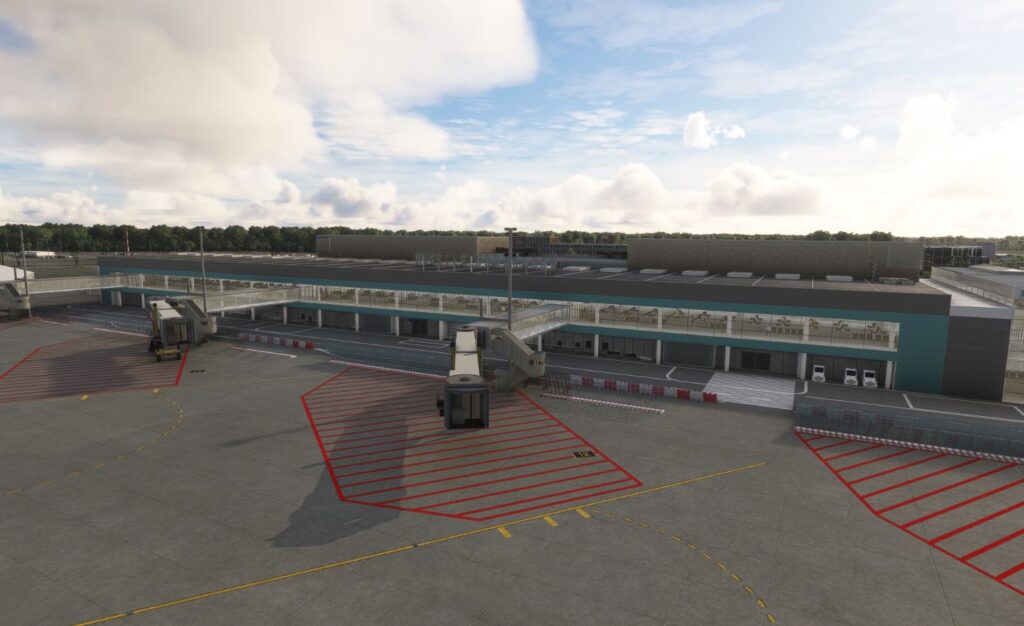
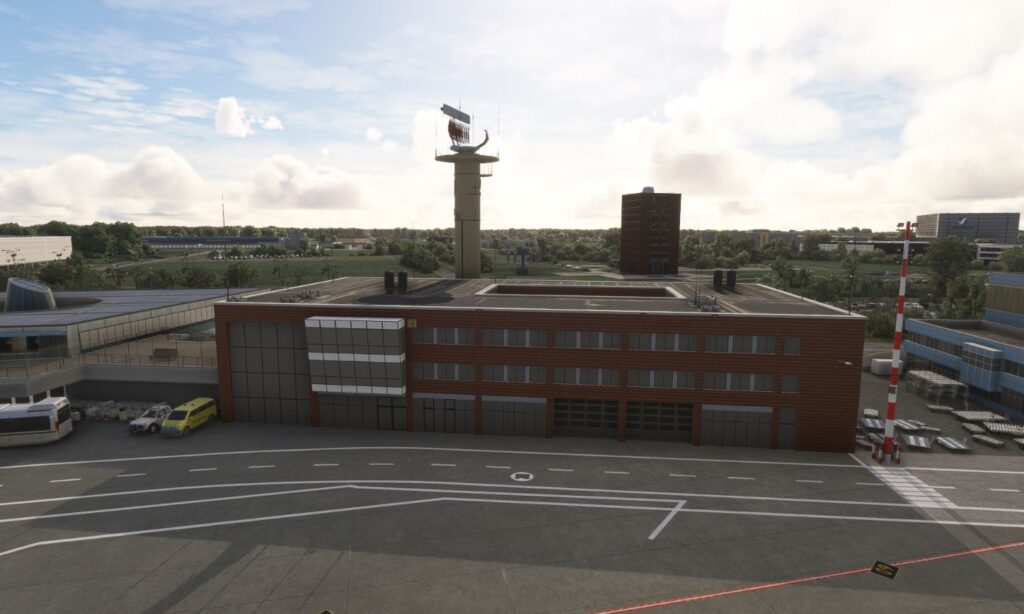
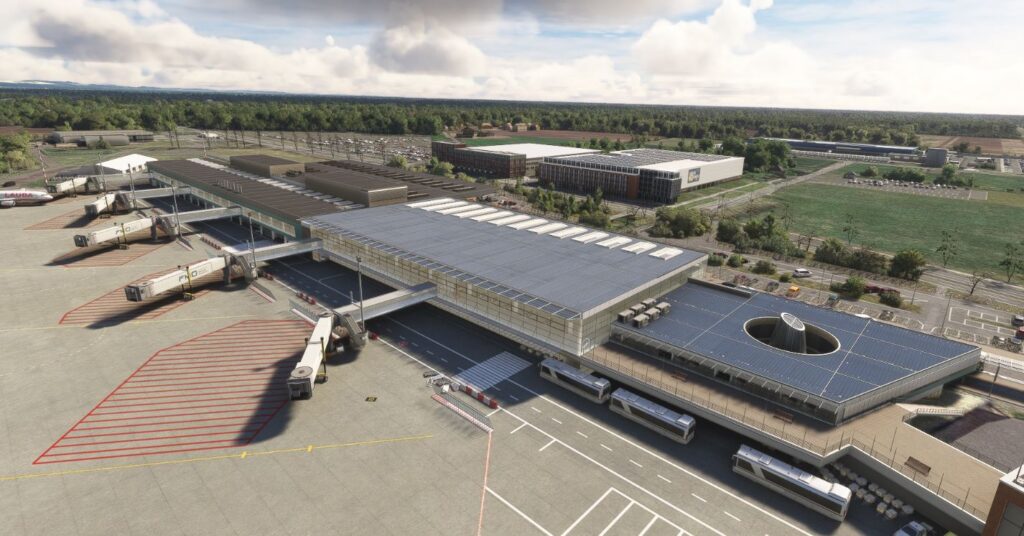
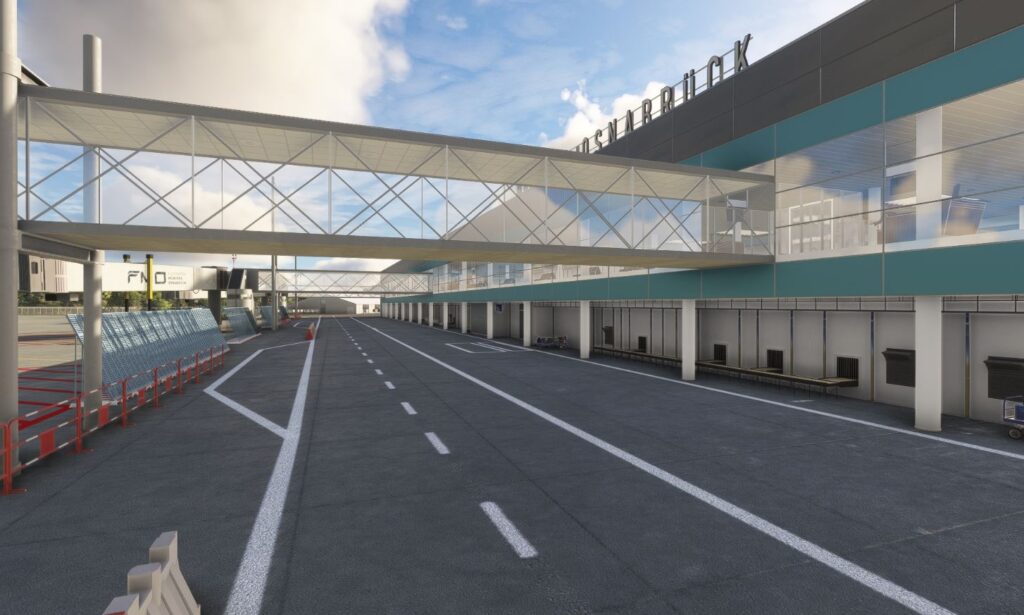
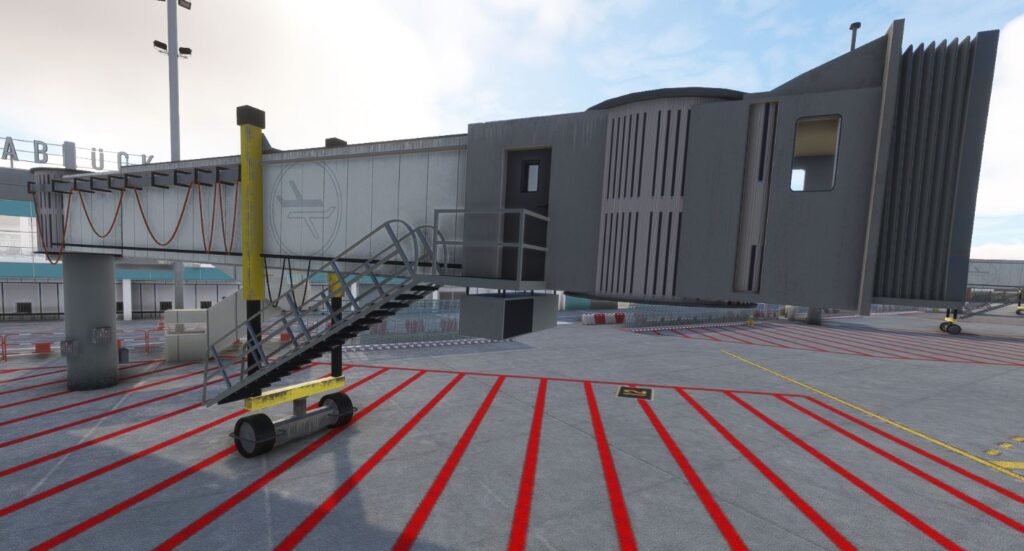
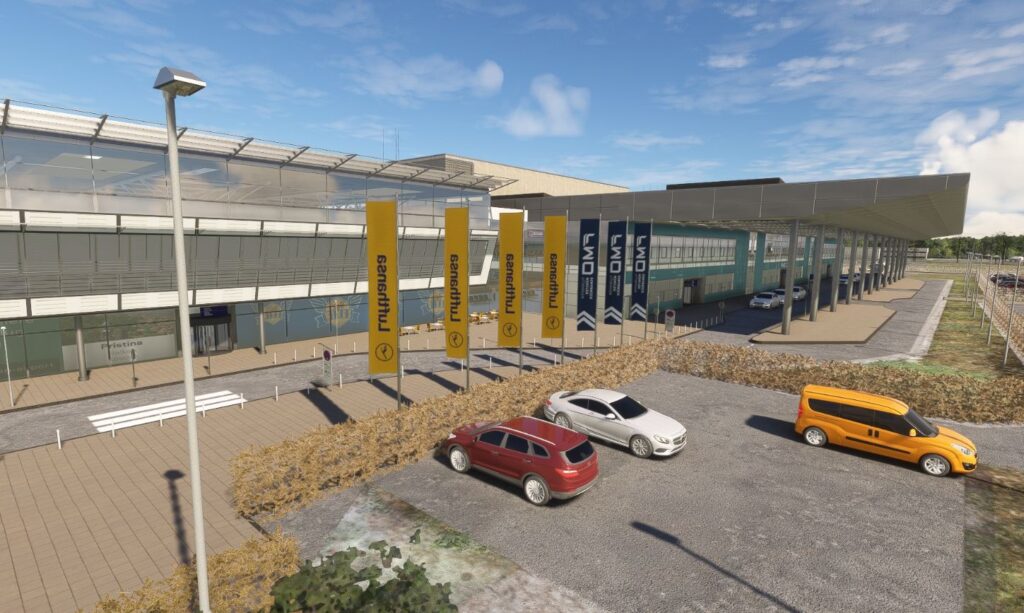
The street side does have a few interesting items that peaked my attention while exploring the area; there is an outside playground that has a unique climber/slide. There is also some sort of sculpture here along the roadway.
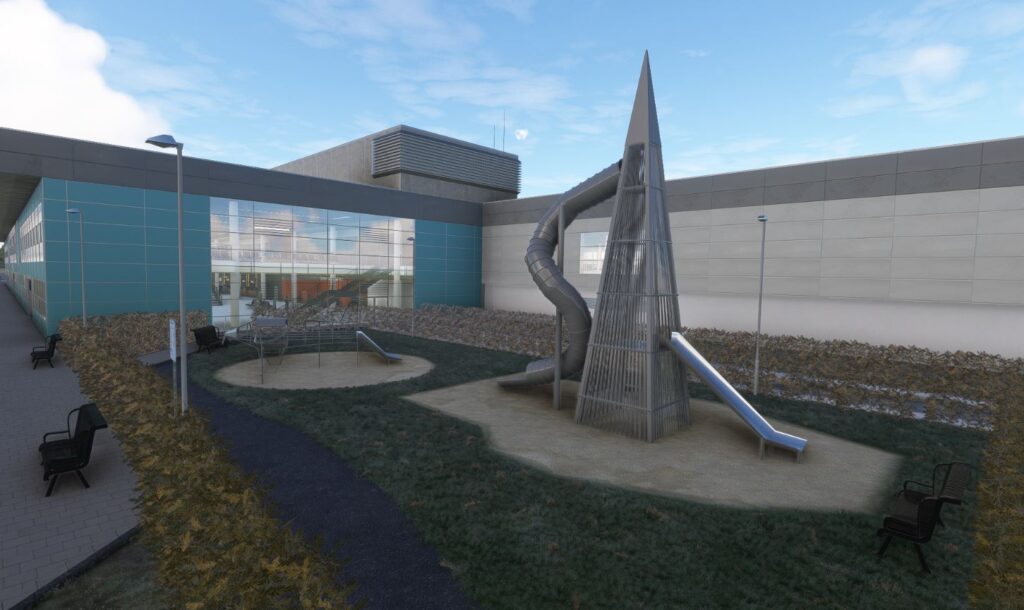
My only real negative comment here would be that with the lack of any visible people outside the entrance of the terminal makes the area look deserted. The inclusion of people milling about would have been a nice touch complimenting the parked cars.
As I mentioned earlier there are a number of other smaller structures, mostly hangars and they to benefitted from the same attention afforded to the much larger passenger terminal complex.
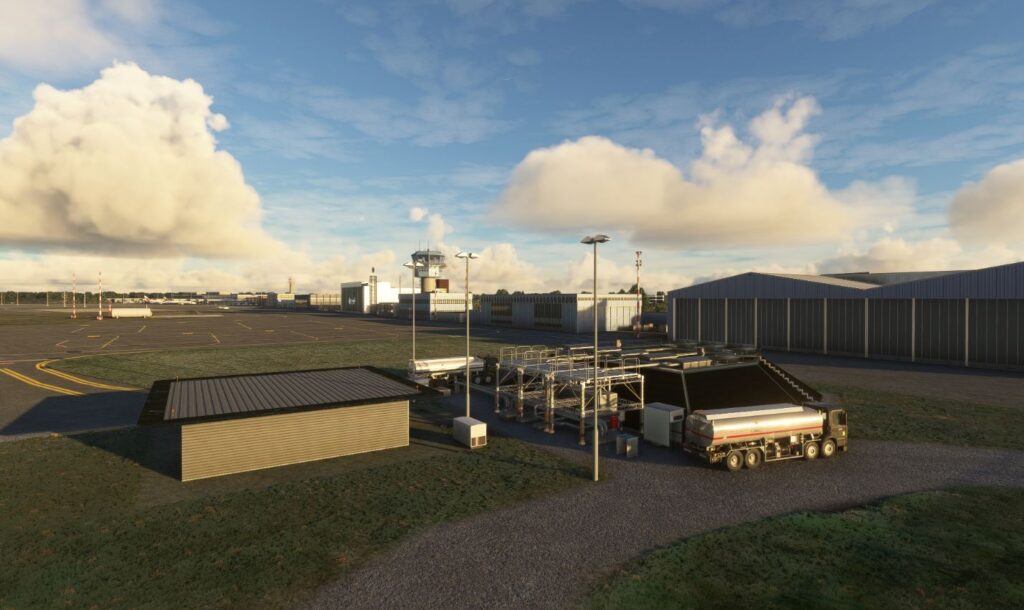
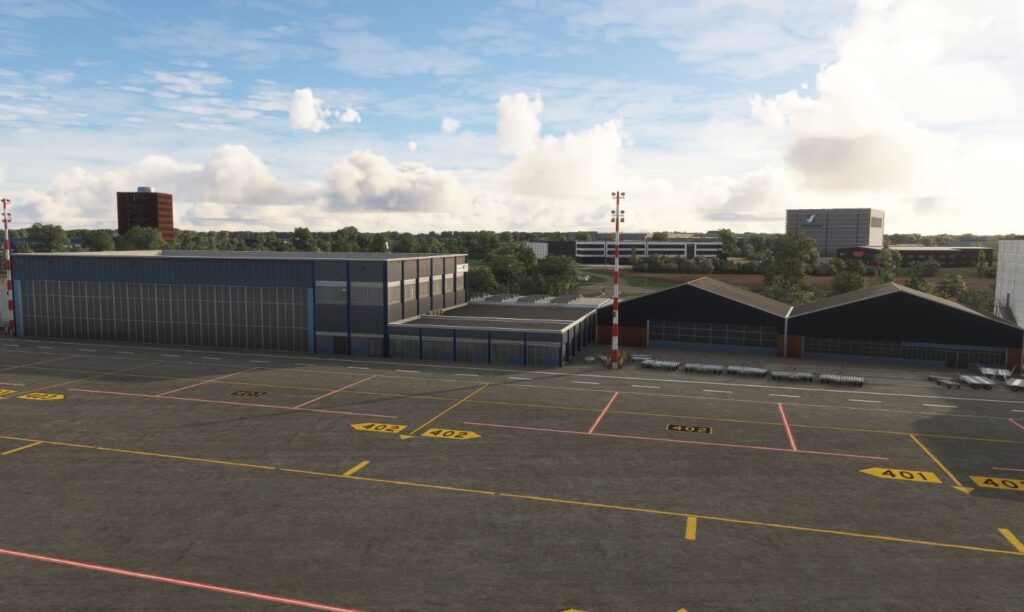
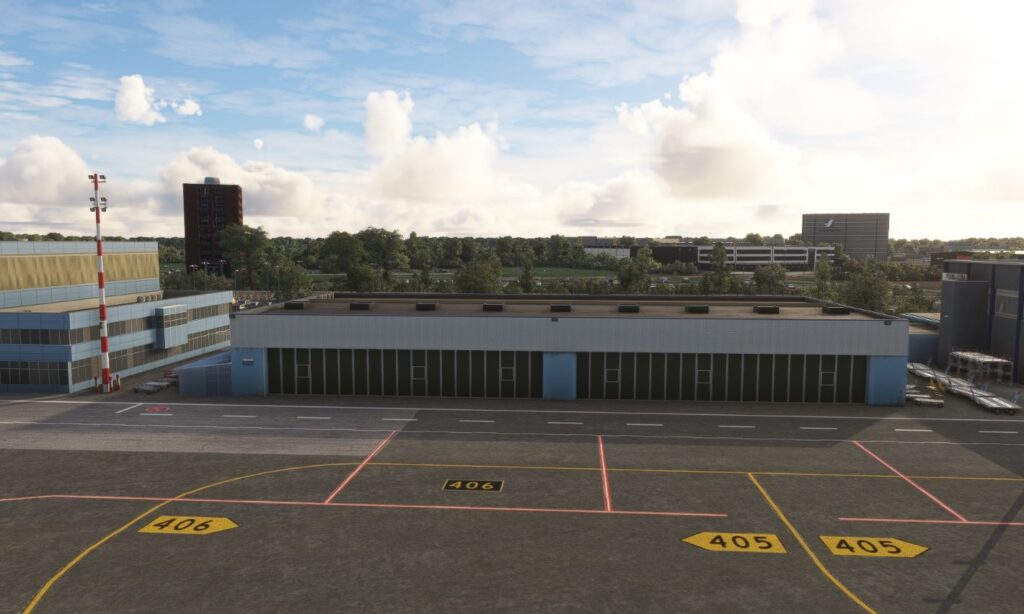
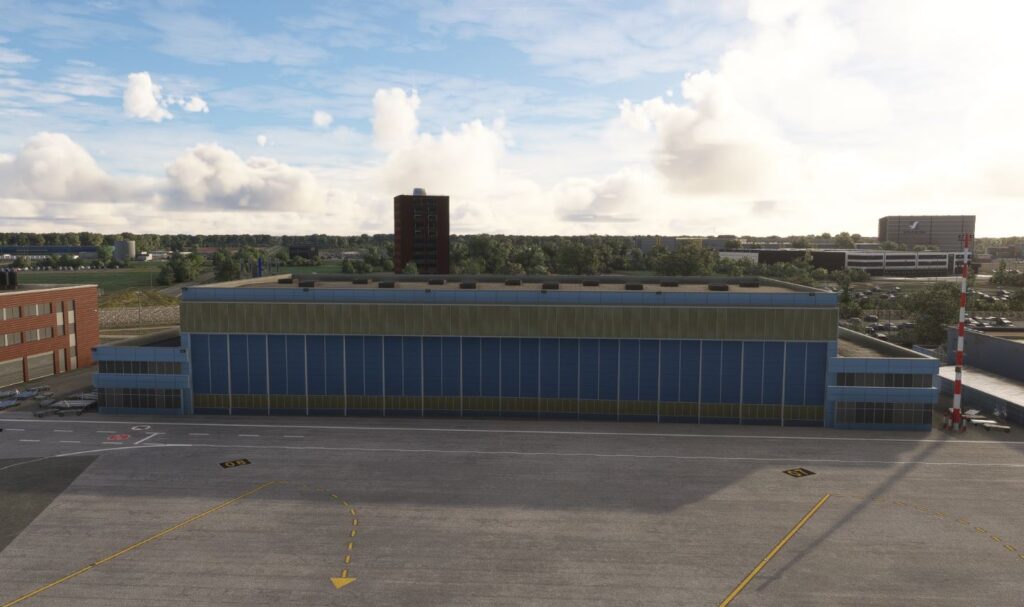
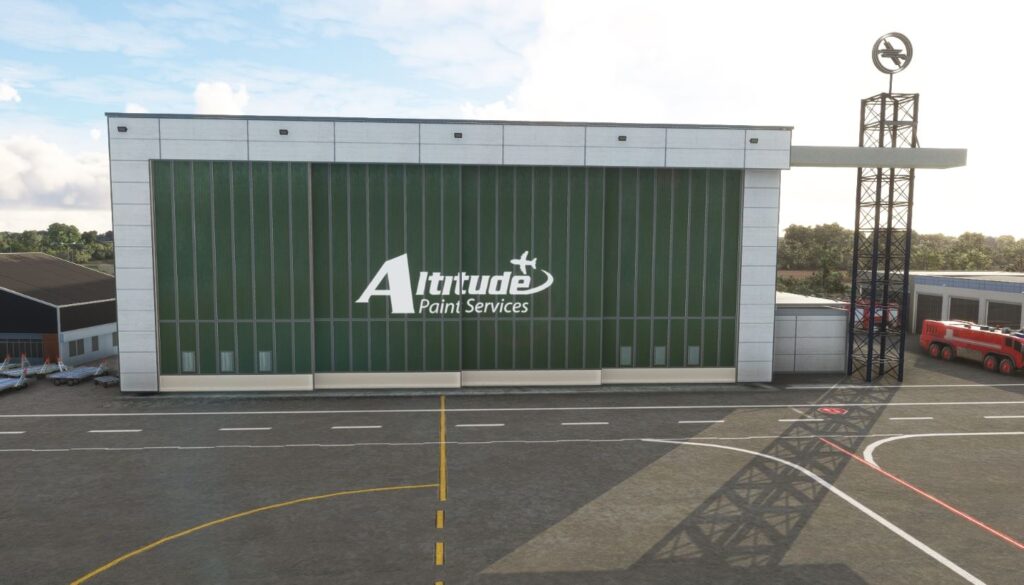
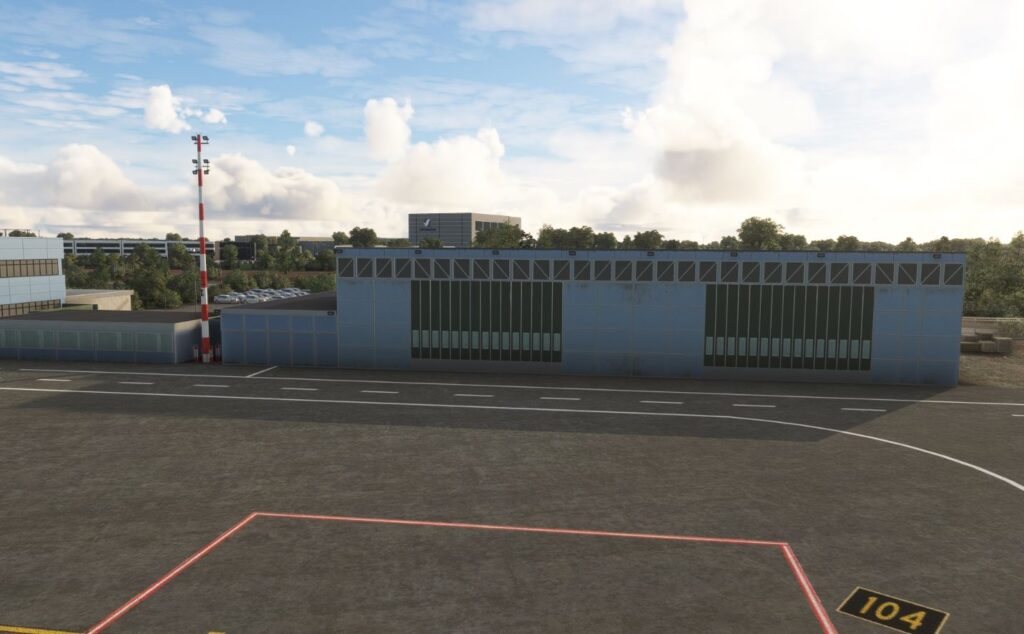
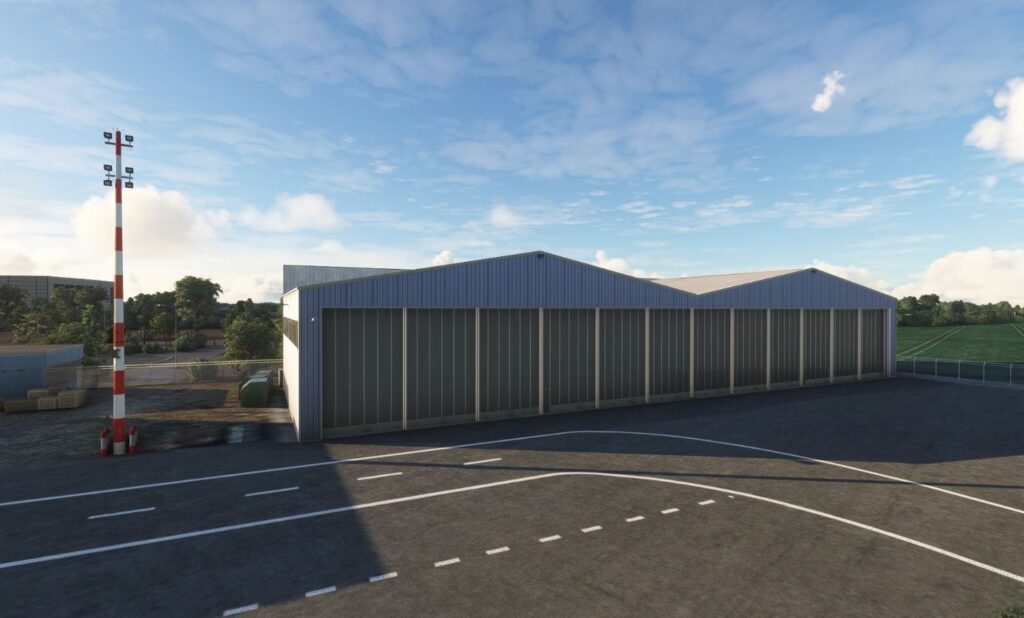
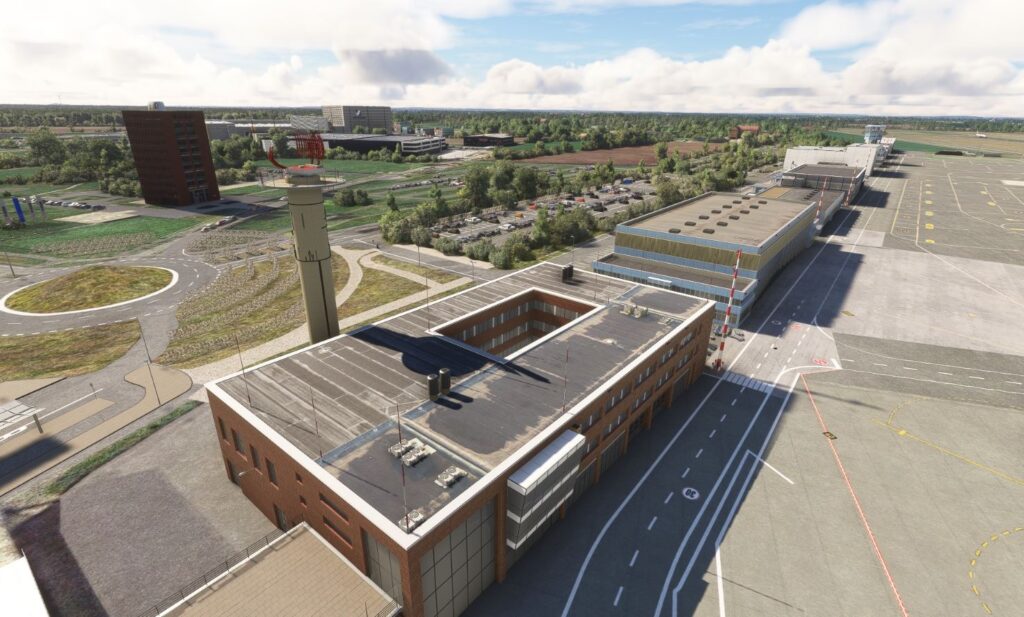
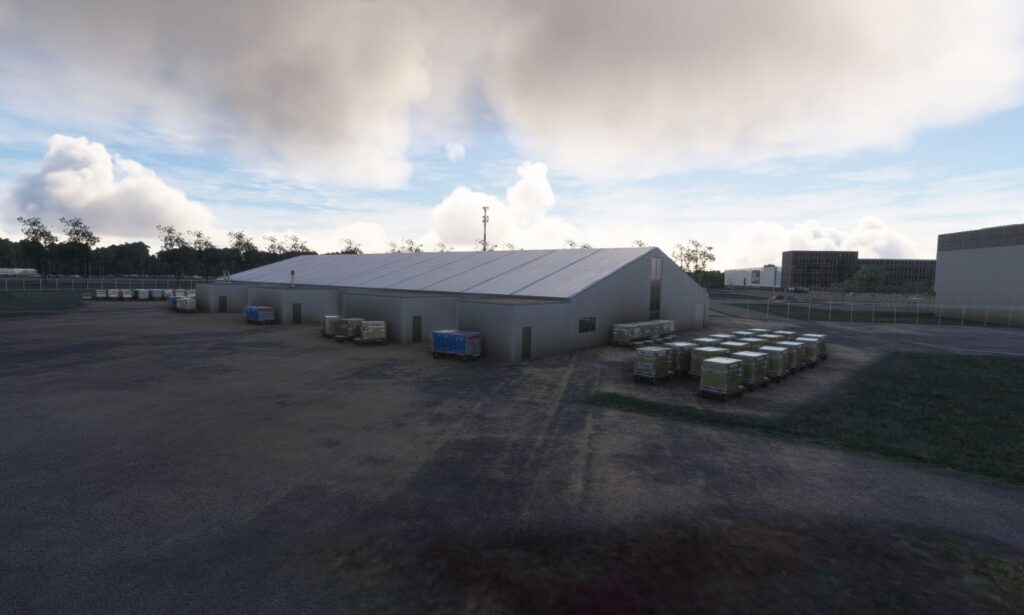
The control tower/AIS facilities has some great external structural details that the developers included; such as rooftop antennas and the open perimeter walkway and exterior ladder. The building is also were we find the fire station that includes several fire trucks parked just outside.
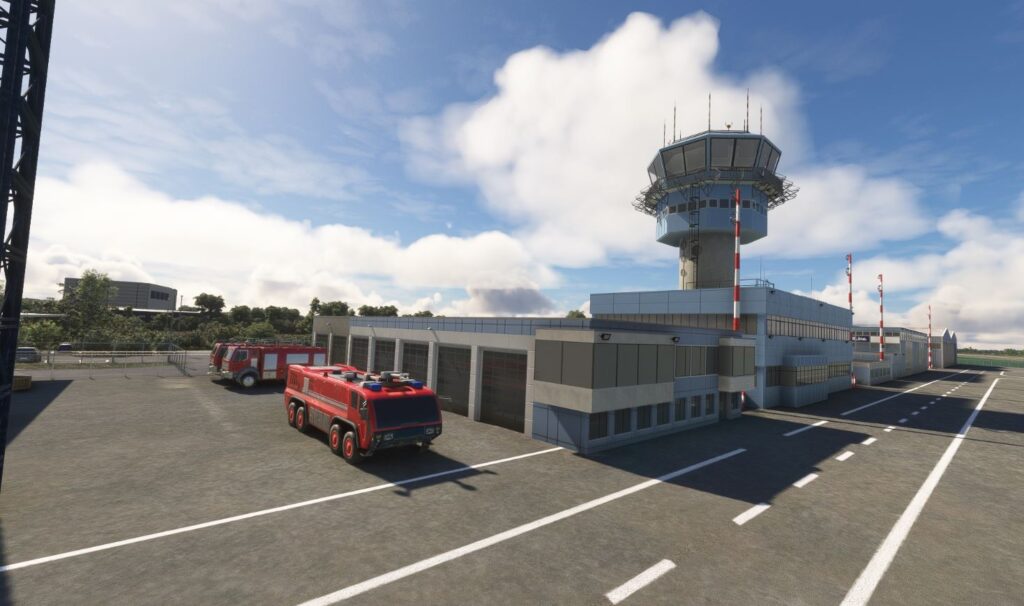
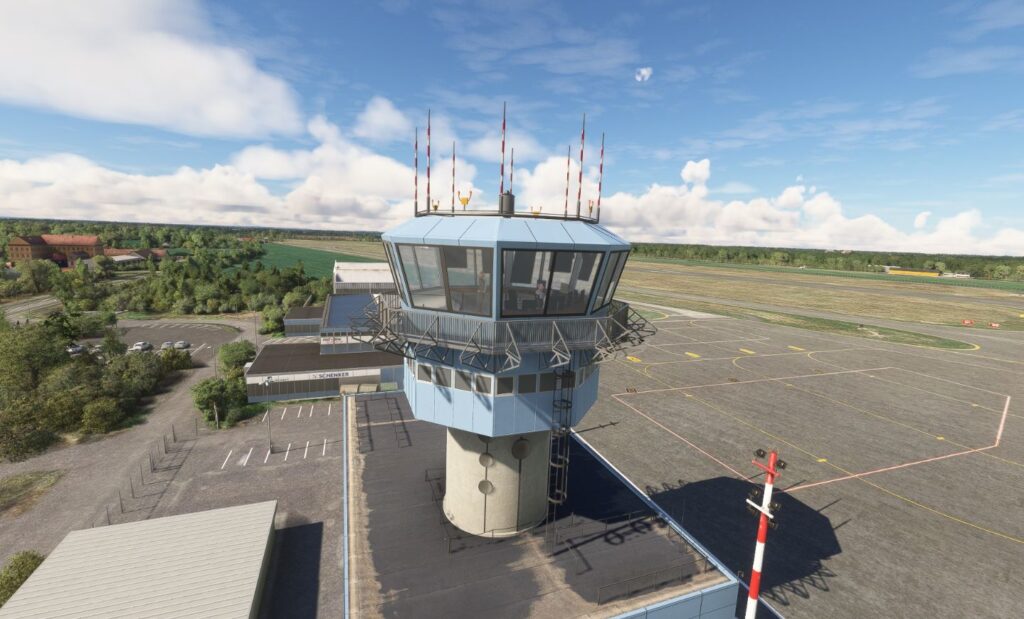
The area just south of the airport terminal entrance is where we find two large multi-level parking garages and several other large industrial/commercial buildings. These are large enough that they are clearly visible while on approach to either runway. Each has been recreated using the same techniques used for all of the other airport structures. Their inclusion adds to the overall visual appeal of the product.
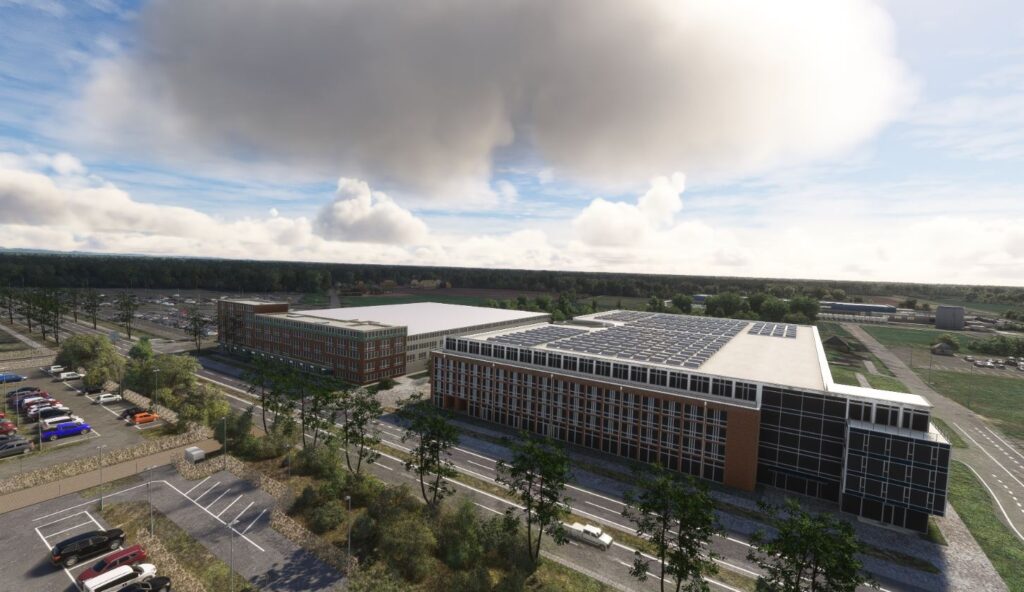
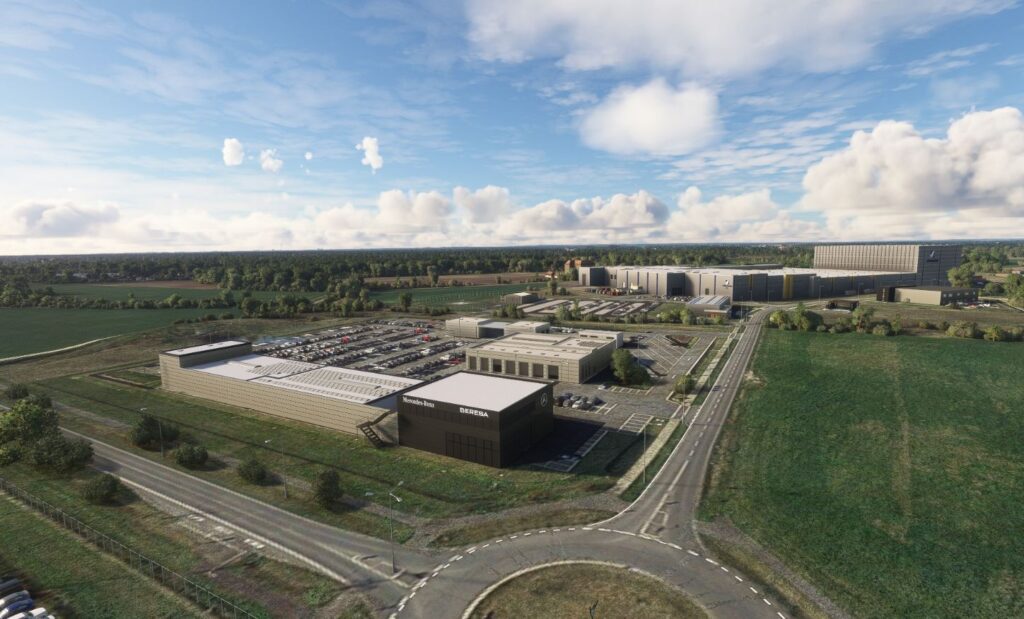
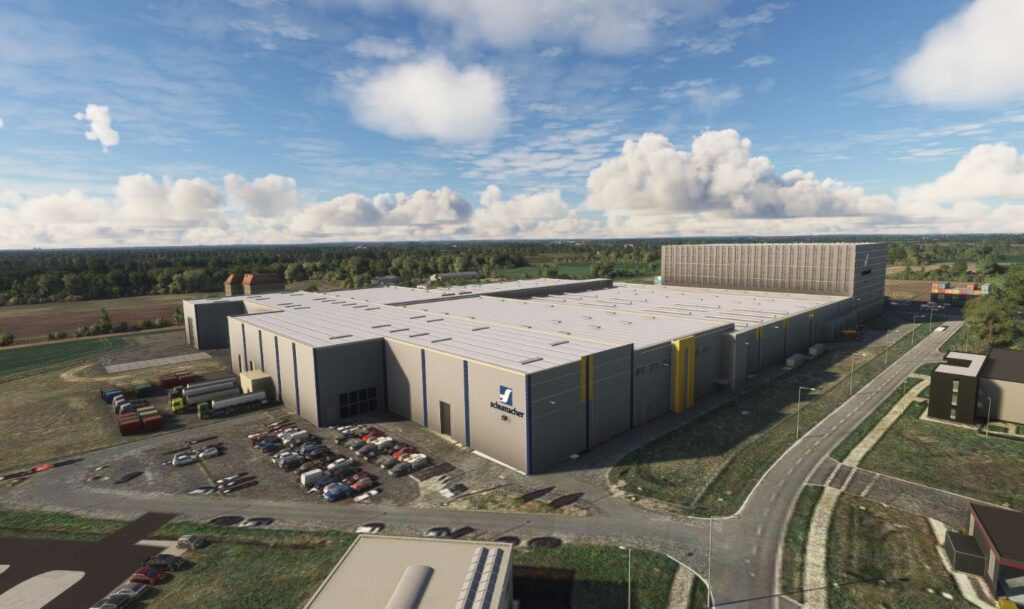
For those of you who like to explore and appreciate the interior areas of the passenger terminal I think you will be quite pleased with the level of detail. It was very easy to distinguish the different areas we expect to see at any airport; boarding gates, security screening, waiting areas, open lobby areas, etc. Most have also been populated with some people to give it that extra bit of realism. The interior modelling is visible from the outside as the large floor to ceiling windows are fully transparent; makes for an interesting view when parked at a jet bridges whether it is daytime or night time.
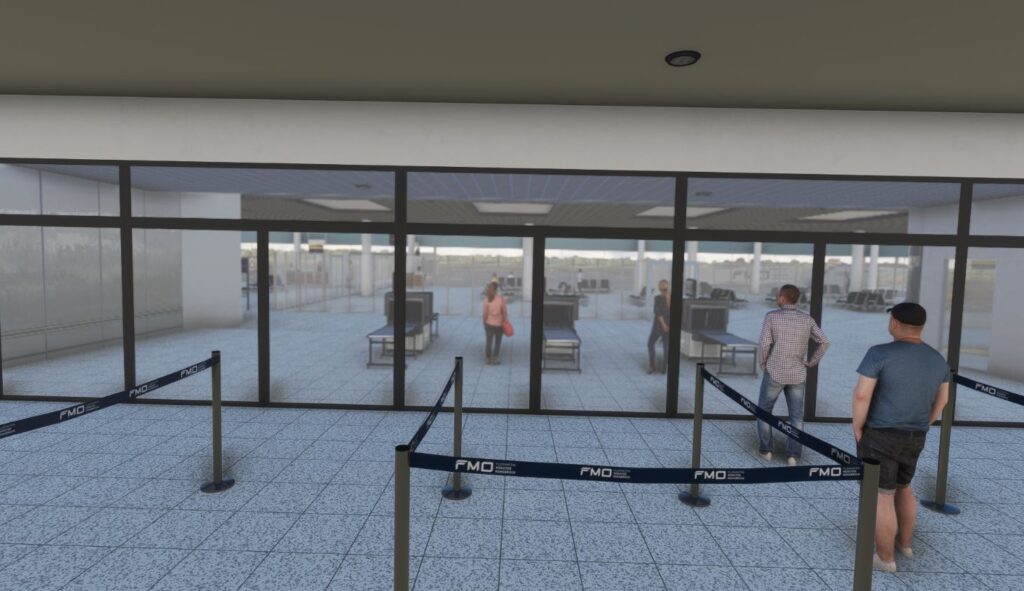
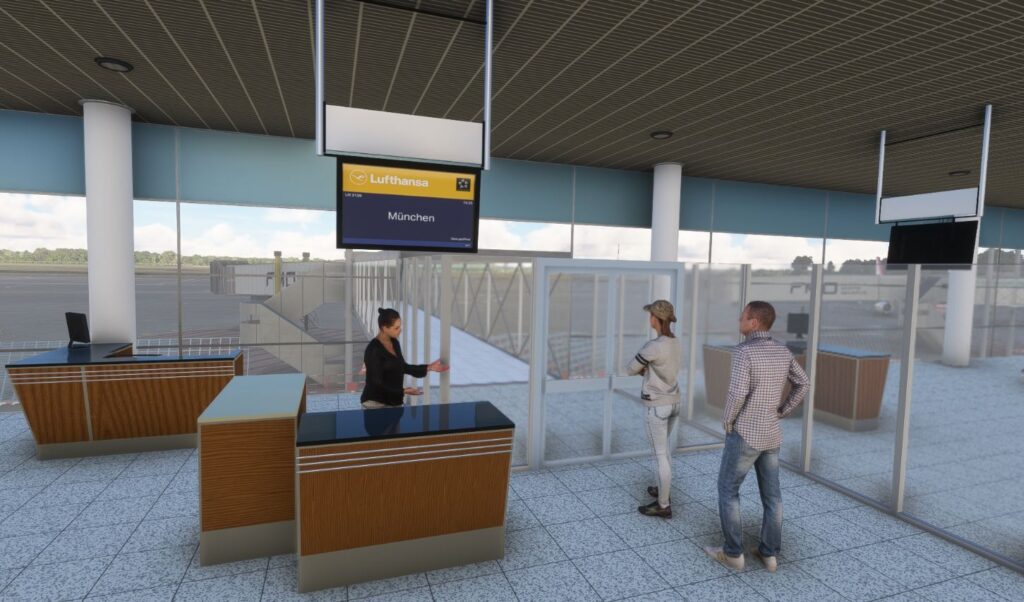
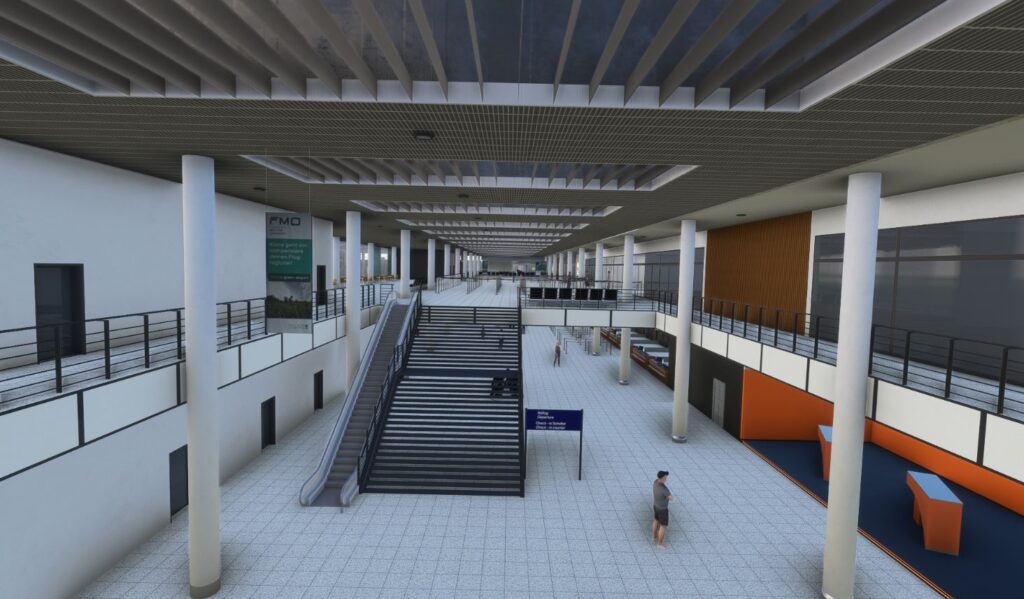
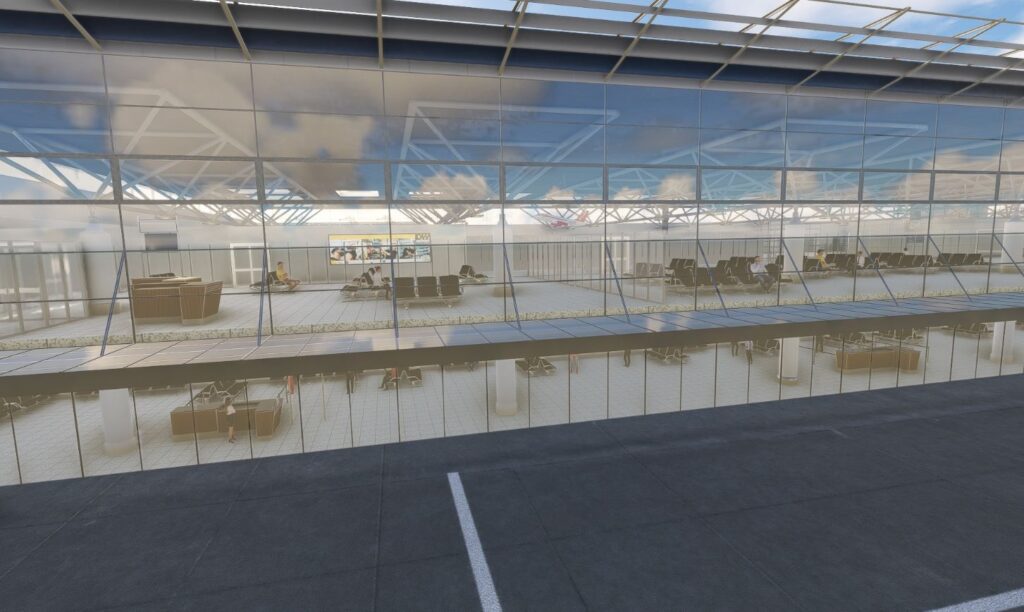
The control tower interior is also visible thru the 360 degree transparent glass. It is extensively modelled and populated with desks, monitors and several air traffic controllers. I personally enjoy looking out over the airport from this vantage point.
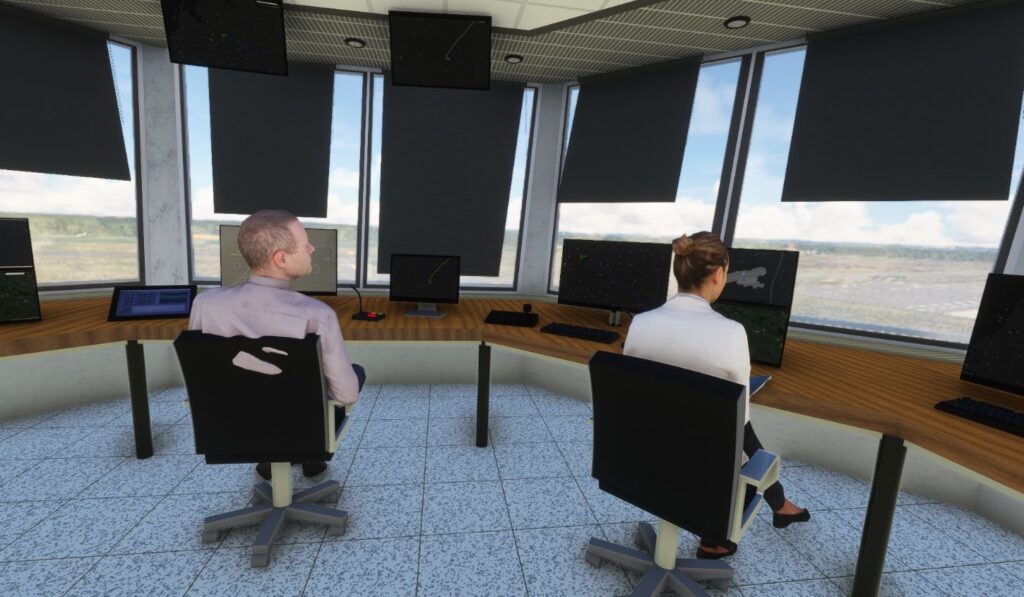
Objects
I found the airport to be populated with the minimum variety and quantity of objects you expect to find at most commercial airports. They included the necessary infrastructure type objects such as taxiway and runway signage, ground and approach lighting and windsocks. Also on the arrival side, the parking lots and terminal roads were populated with cars and trucks.
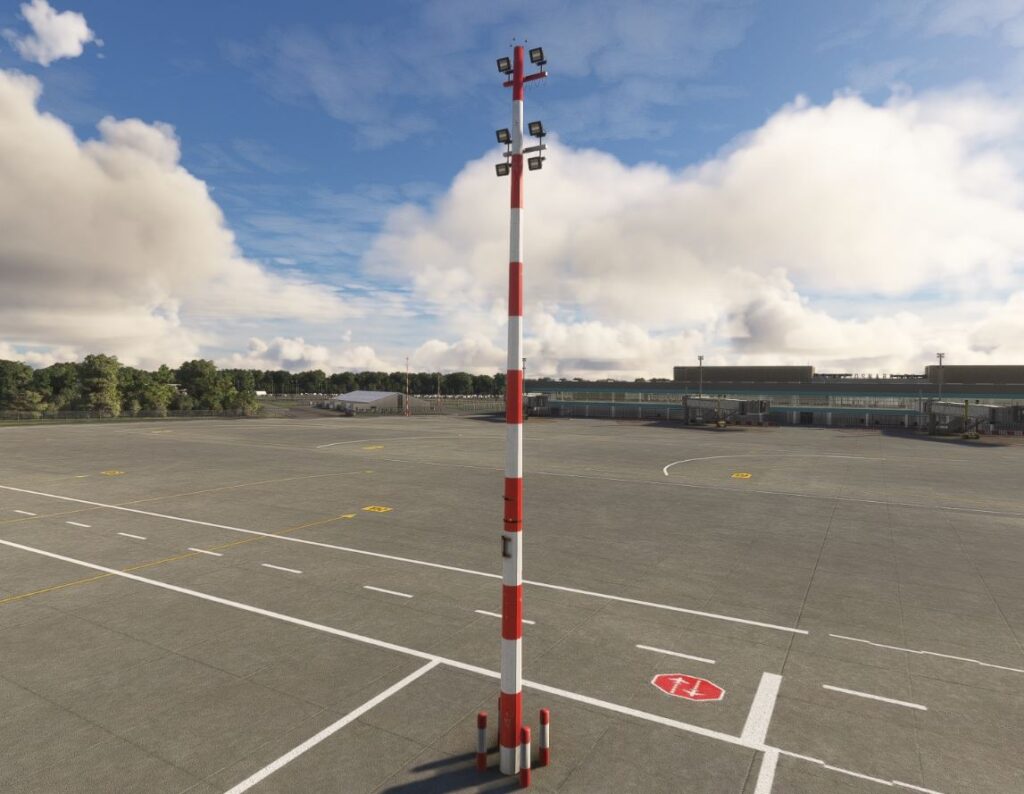
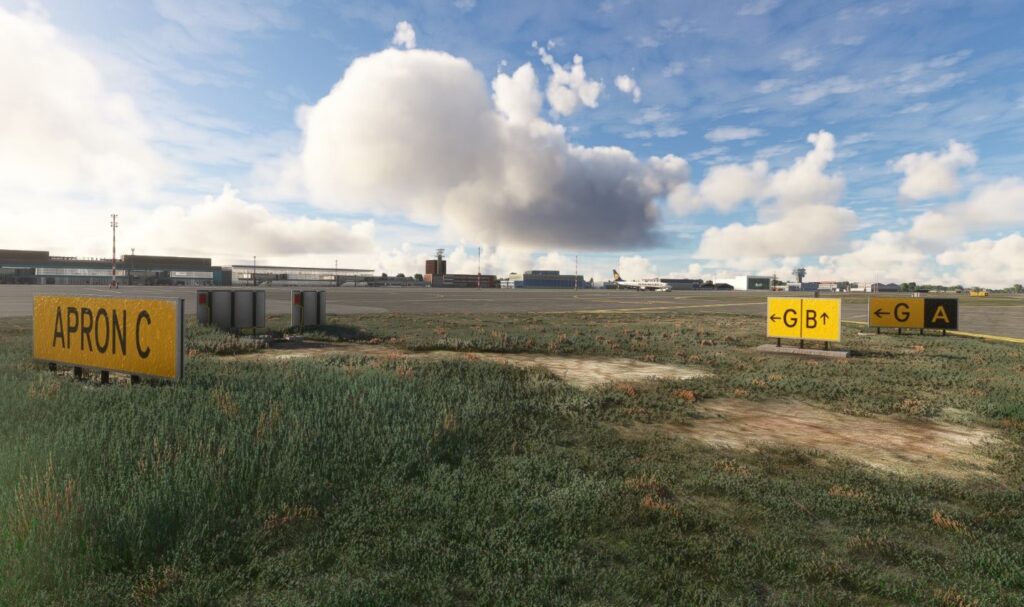
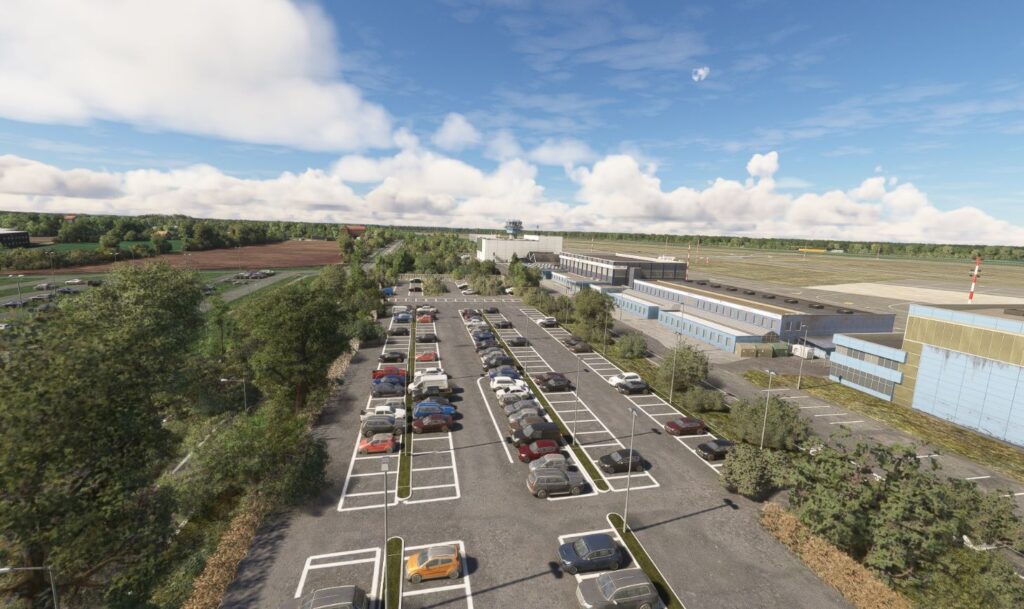
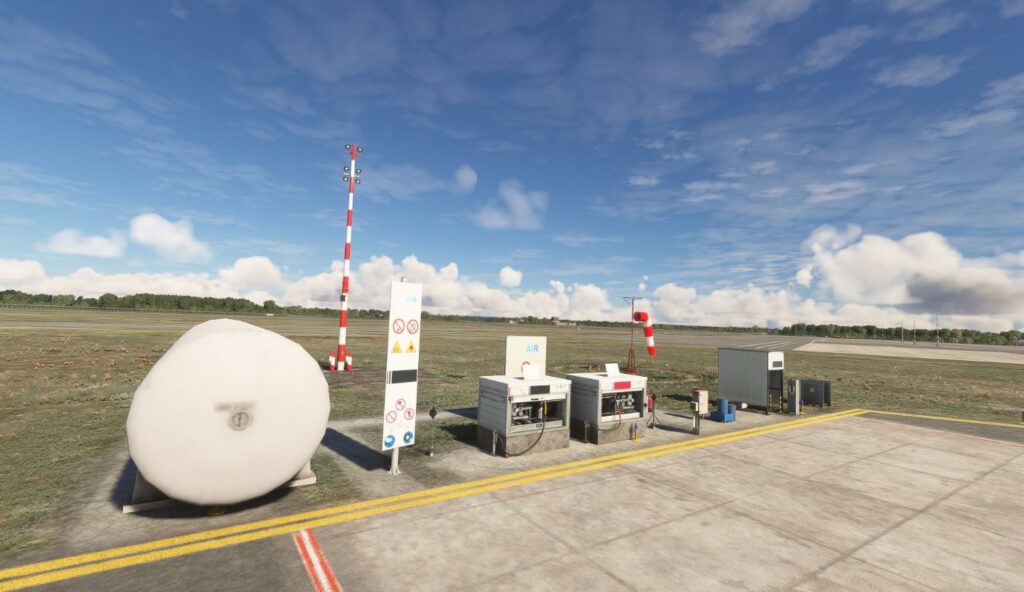
However, I stated minimum because I think they were lacking in the quantity and diversity of objects you typically expect to find in the apron and aircraft parking stand areas; what is needed to support aircraft boarding or deplaning processes. There were a few baggage carts, tugs and GPUs along the apron but I felt they could have had more and the ones they did include were basically isolated to a small cluster near parking stand 10. I realize that this is not a large busy airport however it did seem like there was something definitely lacking. The overall scenery ambience and sense of realism when pulling into a parking stand would have benefitted from the addition of a larger quantity and variety of the objects normally found in these areas.
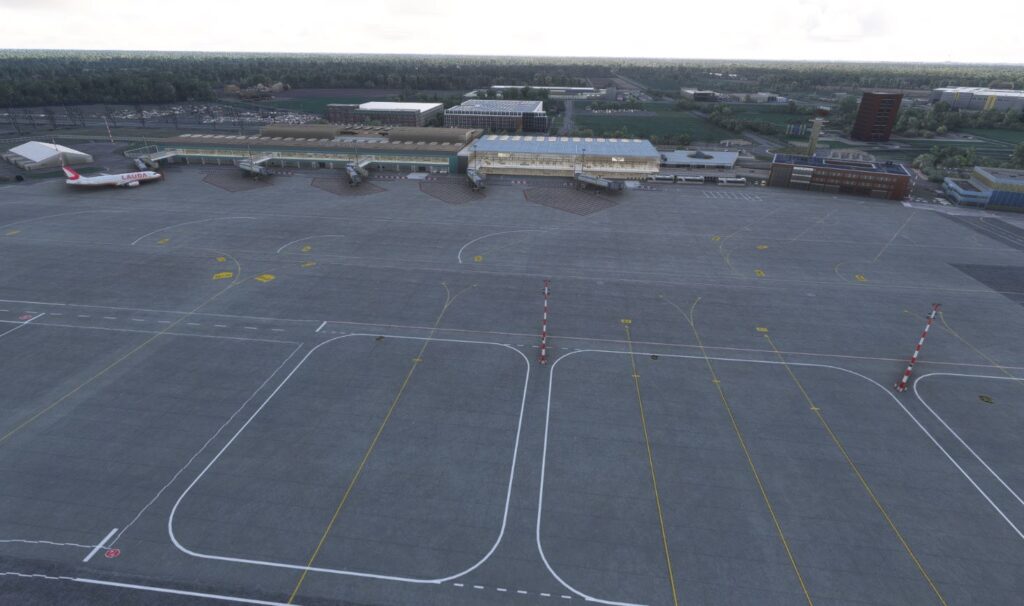
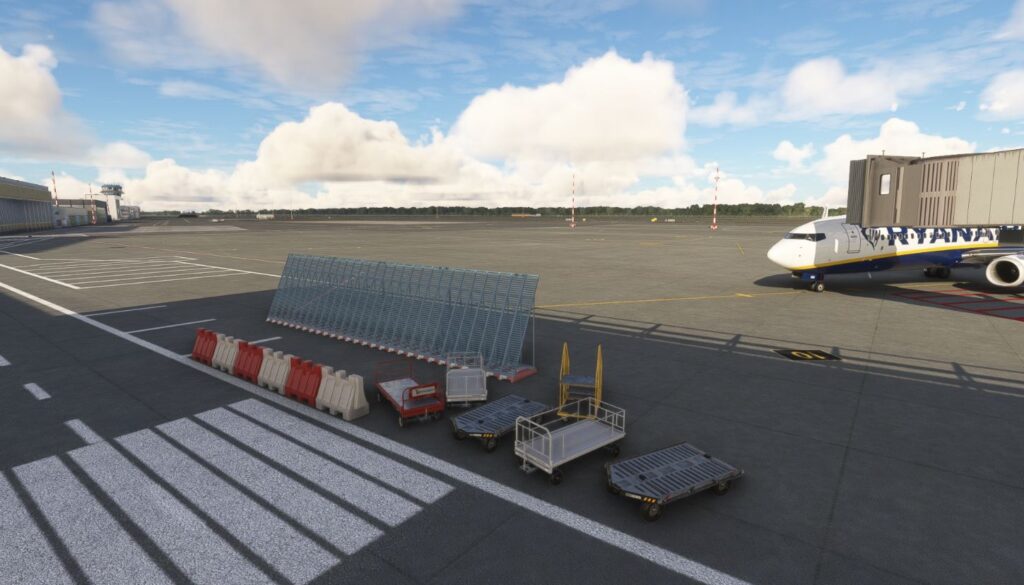
Having said all this they did include some buses that you’d associate with transporting passengers as well as some ground maintenance vehicles and some baggage and freight containers between a few of the hangars and by a building that appeared to be used for freight and cargo services.
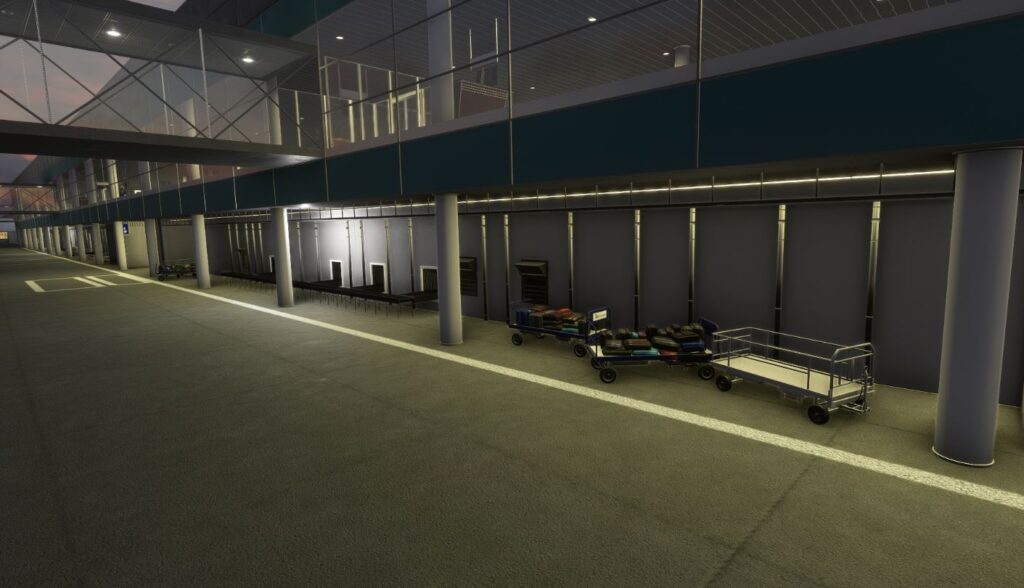
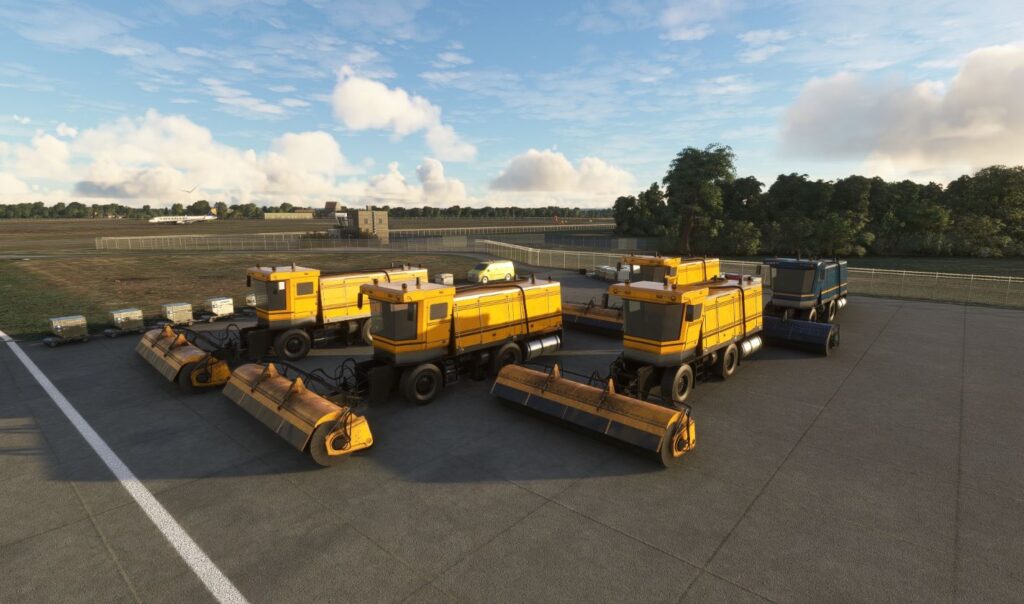
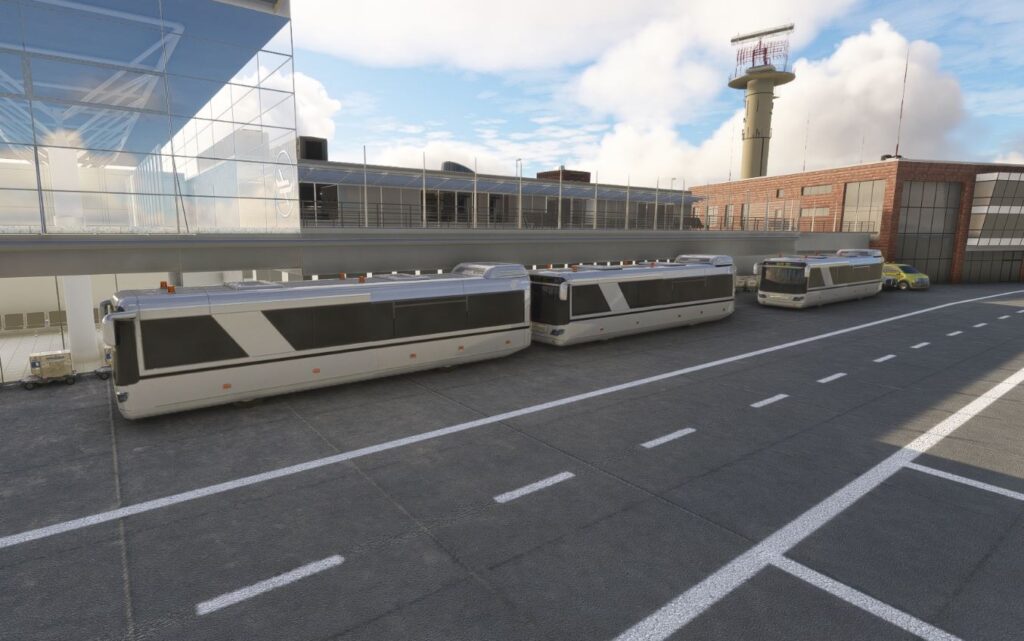
Animations
Several animations are included; there are flags and windsocks that appear to move with the winds, there is a rotating radar antenna and the terminal entrances have revolving doors.
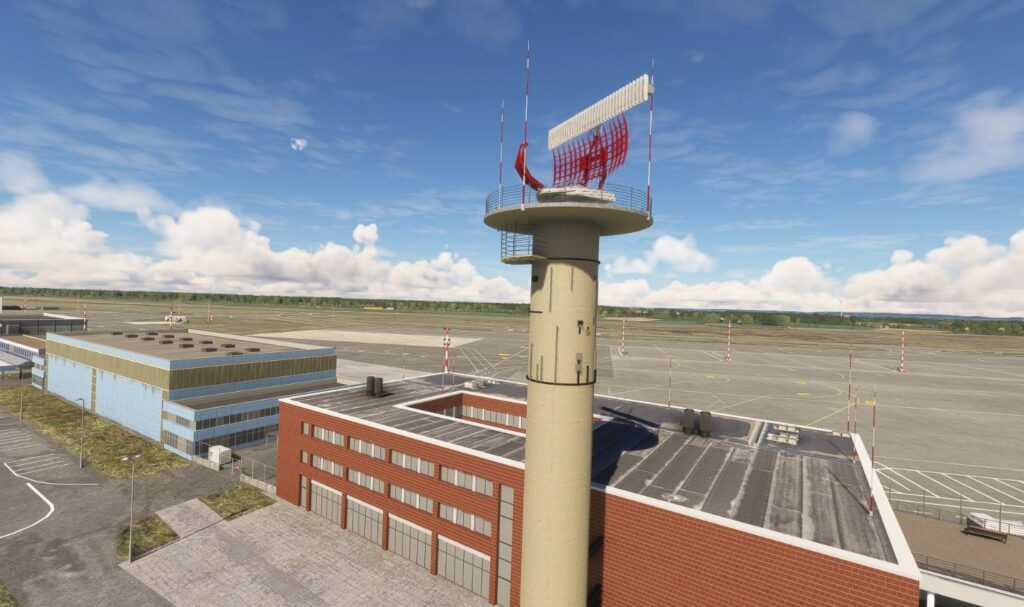
Night
I was very happy with the night time interpretation of the airport. Lighting levels were not overdone and seemed to match the light source both in intensity and illuminated areas. This airport does not allow for takeoffs or landings between 2100z and 0500z so most operations will normally take place between dawn and dusk.
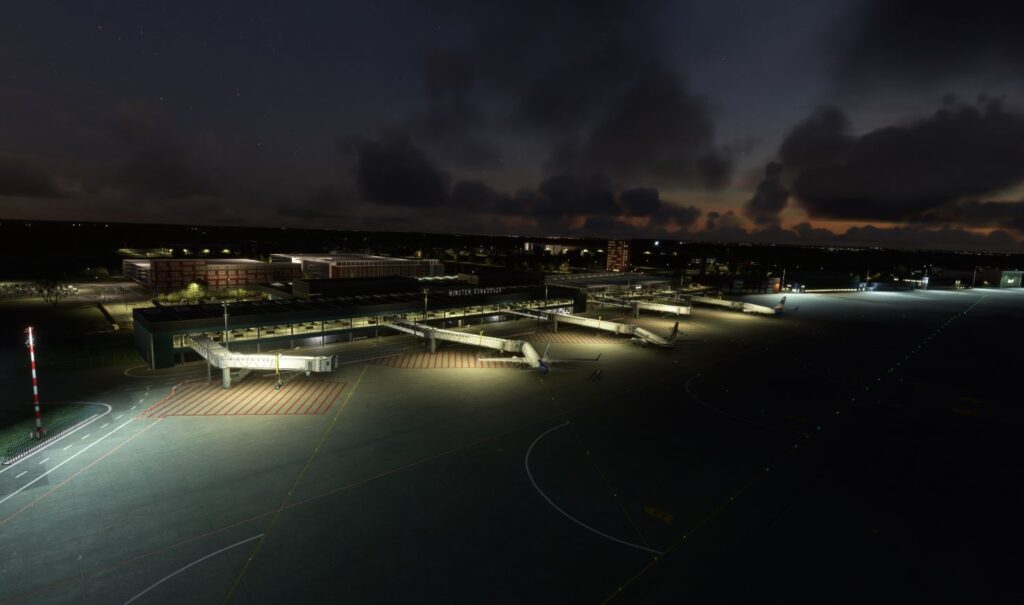
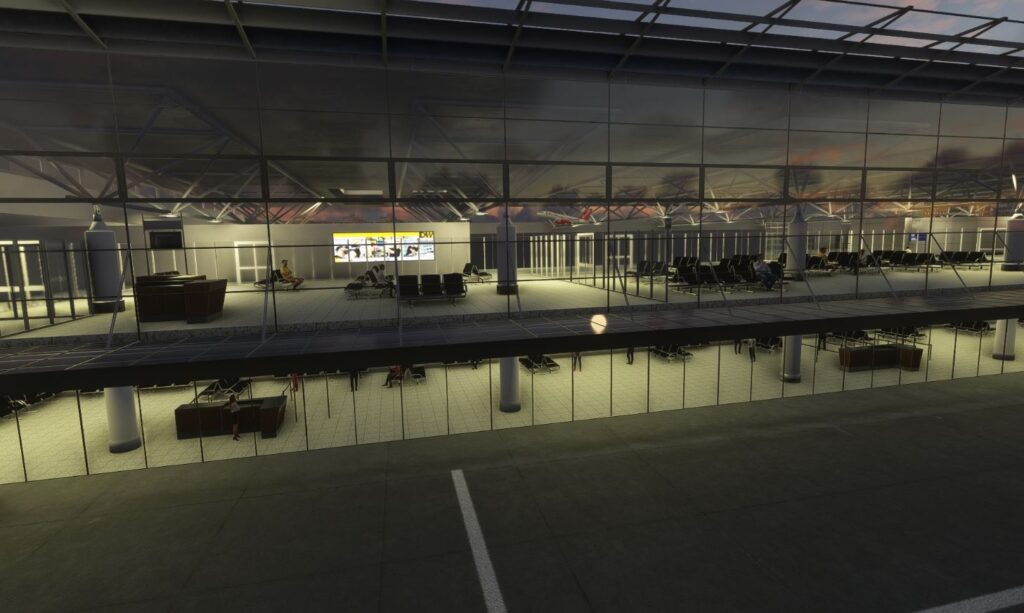
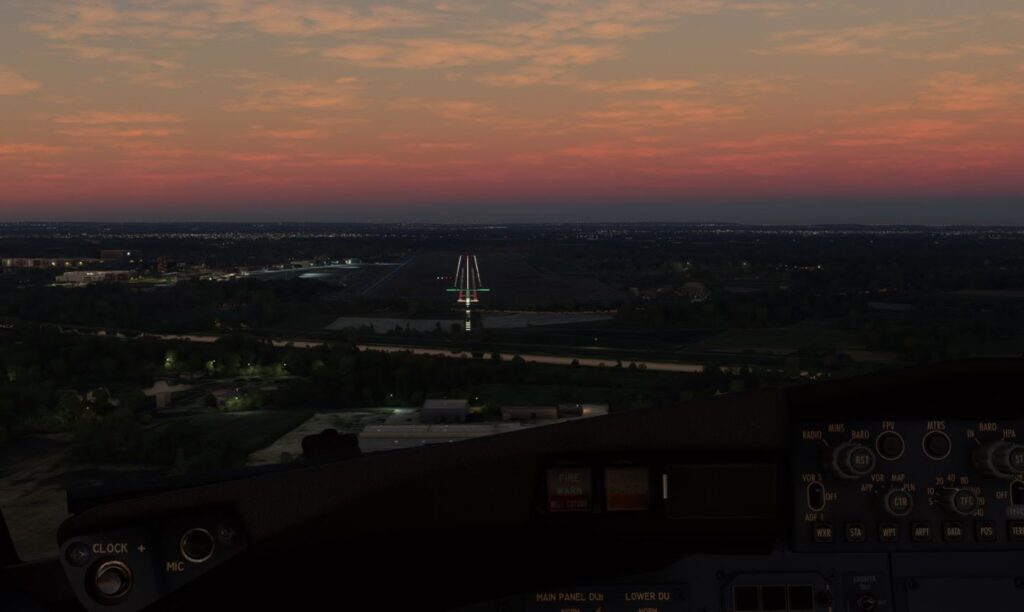
Approaches
Both runways are equipped for ILS, RNAV or NDB approaches providing options for a variety of aircraft.
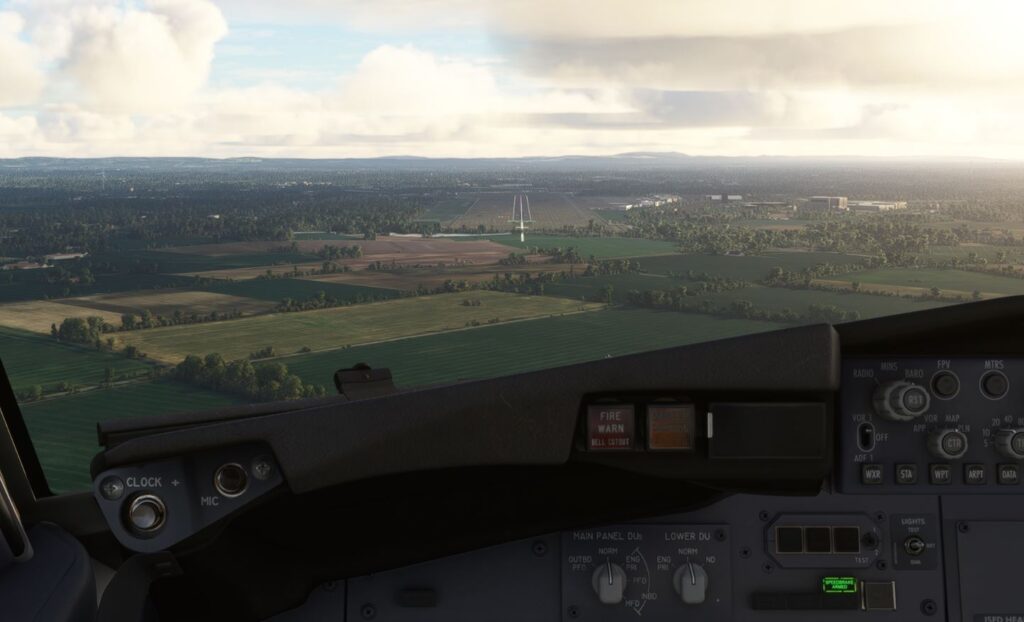
Final Thoughts
I very much enjoyed Münster Osnabrück Airport despite having a few negative comments. As a smaller less busy airport it provides a great location for pilots of small aircraft as well as commercial aircraft to practice take-offs and landings using both visual and instrument procedures.
Review by: Rick Desjardins
| Pros | Cons |
| ➢ Overall, very nicely rendered airport ➢ Good location for regional European flights ➢ Great performance ➢ Excellent airport to practice take-offs and landings | ➢ Could have benefitted from additional apron clutter ➢ Price point may seem a bit high if compared to other larger airport offerings |
| Purchase | Test System |
| SIMMARKET.com Developer: MM Simulations Price: EUR 17.99 (+tax EU customers) | Ryzen 5 5600X, ASUS TUF X570-Plus MB, 1 TB NVMe SSD, 32Gb DDR4 RAM, ASUS RTX 3060 OC w/12Gb VRAM, Win 11, Track IR, FSLTL AI traffic, MSFS auto FPS app |

